You are using an out of date browser. It may not display this or other websites correctly.
You should upgrade or use an alternative browser.
You should upgrade or use an alternative browser.
What is Black body radiation: Definition and 163 Discussions
Black-body radiation is the thermal electromagnetic radiation within or surrounding a body in thermodynamic equilibrium with its environment, emitted by a black body (an idealized opaque, non-reflective body). It has a specific spectrum of wavelengths, inversely related to intensity that depend only on the body's temperature, which is assumed for the sake of calculations and theory to be uniform and constant.The thermal radiation spontaneously emitted by many ordinary objects can be approximated as black-body radiation. A perfectly insulated enclosure that is in thermal equilibrium internally contains black-body radiation and will emit it through a hole made in its wall, provided the hole is small enough to have a negligible effect upon the equilibrium.
In a dark room, a black body at room temperature appears black because most of the energy it radiates is in the infrared spectrum and cannot be perceived by the human eye. Since the human eye cannot perceive light waves below the visible frequency, a black body at the lowest just faintly visible temperature subjectively appears grey, even though its objective physical spectrum peak is in the infrared range. The human eye essentially does not perceive color at low light levels. When the object becomes a little hotter, it appears dull red. As its temperature increases further it becomes bright red, orange, yellow, white, and ultimately blue-white.
Although planets and stars are neither in thermal equilibrium with their surroundings nor perfect black bodies, black-body radiation is used as a first approximation for the energy they emit. Black holes are near-perfect black bodies, in the sense that they absorb all the radiation that falls on them. It has been proposed that they emit black-body radiation (called Hawking radiation), with a temperature that depends on the mass of the black hole.The term black body was introduced by Gustav Kirchhoff in 1860. Black-body radiation is also called thermal radiation, cavity radiation, complete radiation or temperature radiation.
View More On Wikipedia.org
In a dark room, a black body at room temperature appears black because most of the energy it radiates is in the infrared spectrum and cannot be perceived by the human eye. Since the human eye cannot perceive light waves below the visible frequency, a black body at the lowest just faintly visible temperature subjectively appears grey, even though its objective physical spectrum peak is in the infrared range. The human eye essentially does not perceive color at low light levels. When the object becomes a little hotter, it appears dull red. As its temperature increases further it becomes bright red, orange, yellow, white, and ultimately blue-white.
Although planets and stars are neither in thermal equilibrium with their surroundings nor perfect black bodies, black-body radiation is used as a first approximation for the energy they emit. Black holes are near-perfect black bodies, in the sense that they absorb all the radiation that falls on them. It has been proposed that they emit black-body radiation (called Hawking radiation), with a temperature that depends on the mass of the black hole.The term black body was introduced by Gustav Kirchhoff in 1860. Black-body radiation is also called thermal radiation, cavity radiation, complete radiation or temperature radiation.
View More On Wikipedia.org
-

Hi, I am newcomer. I was stuck at a Physics problem , so I came here!
Here is my question : In the intensity distribution diagram the Area represents total energy radiated per second per square meter as the y axis represents intensity and x axis represents wavelength, than does it mean wavelength × intensity = energy radiated per second per square meter?- AttaUllah
- Thread
-
- Tags
- Black body radiation
- Replies: 1
- Forum: New Member Introductions
-
S
I DeSitter cosmological horizon stability?
If the universe keeps expanding at an accelerated rate (given by the cosmological constant) then the universe would approach a DeSitter spacetime where there would be a cosmological horizon that would radiate just as the event horizon of a black hole radiates Hawking radiation I thought that... -
V
Why optical pyrometer gives a low reading?
From my knowledge, the optical pyrometer determines temperature of a body based on the visible part of the heat radiation spectrum emitted by a body. Now the iron piece was red hot inside the furnace as well as outside the furnace, so it is emitting heat radiation in the visible part both while...- vcsharp2003
- Thread
- Replies: 19
- Forum: Introductory Physics Homework Help
-

Black body radiation and gas
The image above is the solution posted by the book. I can follow the reasoning that has been used, but i have a trouble particularly at the first equation itself. Why should $$n = 2 \rho / m_{H} $$ instead of $$n = \rho / (2m_{H})$$, since the mass os a molecule of hydrogen is two times the...- LCSphysicist
- Thread
- Replies: 2
- Forum: Introductory Physics Homework Help
-
A
Application Of Kirchoff Law (Desert)
Homework Statement:: Sand is rough and black so it is a good absorber and radiator of heat depending on temperature. During the day, sand's radiation of the sun's energy superheats the air and causes temperatures to soar. But, at night most of the heat in the sand quickly radiates into the air...- Aurelius120
- Thread
- Replies: 6
- Forum: Earth Sciences
-

I Continuous Spectrum and Energy levels of Electrons (Energy Bands)
My book says that emission spectra are produced when an electron in excited state jump from excited to lower energy states. It also states that solids and liquids produce continuous spectra and it depends upon temperature only (is this black body radiation?). I know, Electrons around a nucleus...- ktmsud
- Thread
- Replies: 7
- Forum: Quantum Physics
-
V
B Two questions about Black body radiation
I have questions about Black body radiation. see the attached image 1). It explains that the Spectral radiance measurement of 7000K temperature is the same as both 300 and 520 nm wavelength light. See here both A and B shows 60. Is my understanding correct? 2). Is spectral radiance the number...- vijayantv
- Thread
- Replies: 12
- Forum: Quantum Physics
-
A
I Black body radiation -- Some basic questions to aid my understanding
Hi I am currently taking a physics course and studying black body radiation.I have already seen a good number of books , but I have a lot of unanswered questions. -What does the black body radiation, which is approximately the radiation of the sun, has to do with standing waves inside a cavity...- AhmedHesham
- Thread
- Replies: 7
- Forum: Quantum Physics
-
E
Black body radiation -- Spherical shell surrounding a star
I don't understand how this can be solved. The official solution was: F=\sigma*T^4 E=F*4\pi R^2*60*60 This doesn't make sense to me, as it seems to imply that the energy that the black body radiates depends on the radius of the shell. For a very large shell the body will reflect...- Eitan Levy
- Thread
- Replies: 10
- Forum: Introductory Physics Homework Help
-

Power of black body radiation at 1.00 nm
- jjson775
- Thread
- Replies: 15
- Forum: Introductory Physics Homework Help
-

Black body radiation vs electric discharge in a gas
Black body radiation formula contains power and exponential terms. Electric discharge in a gas results in the ion acceleration; the ion distribution comprises power and exponential terms too. Any connection between these two phenomena (i.e. black body and potential) could be established?- naviakam
- Thread
- Replies: 70
- Forum: Electromagnetism
-

Black Body Radiation: Facts & Overview
I am really stuck at this question, i would appreciate any tips you have. I already try to goes with series but the calculation is getting harder and tiring, so probably this is not the right way.- LCSphysicist
- Thread
- Replies: 1
- Forum: Introductory Physics Homework Help
-

I Visualising an alternative formulation of Planck's Radiation Law
I've come across this alternative formulation of Planck's Law which links the number density to energy gap n(E) = \frac{2\pi}{c^2 h^3} \frac{E^2}{exp\big(\frac{E-\mu}{k_BT})-1} I've tried visualising this relation and I imagine it will look similar to the spectral density relation but I'm just...- TheBigDig
- Thread
- Replies: 8
- Forum: Quantum Physics
-

Black Body Radiation -- why is it not at discrete wavelengths?
I was looking at Kirchoffs Laws: "A solid, liquid or dense gas produces a continuous spectrum". I would expect objects to produce an emission spectrum since we would be observing the photons that come from spontaneous emission of electrons in excited states. This photons are specific to the...- SebastianRM
- Thread
- Replies: 3
- Forum: Thermodynamics
-
A Equipartition of energy in the modes of a resonant cavity
I think the answer for this may be straightforward, but I don't see anywhere that explains this from the scratch: A large resonant cavity with a small hole is used to approximate an ideal black body. I understand the conditions for the modes inside the cavity. But there are two points that...- Guilherme Franco
- Thread
- Replies: 4
- Forum: Classical Physics
-

Black Body radiation and Planck's radiation distribution
I am quite confused, as I start this question. I can easily find the following when searching up Planck's law: However, this is not u. My prof is quite unclear and sometimes chooses his own variables as he sees fit, so i am not sure if this would be equivalent to what he is looking for u(λ)dλ...- Cocoleia
- Thread
- Replies: 10
- Forum: Introductory Physics Homework Help
-

Black body radiation, Planck's law, derivation
The following are 3 equations of Planck's law or Planck's distribution function. Are they all correct? How do they derive from each other? Equation One: From page 512 of http://metronu.ulb.ac.be/npauly/art_2014_2015/shockley_1961.pdf We denote by Qs the number of quanta of frequency greater...- Max Loo Pin Mok
- Thread
- Replies: 2
- Forum: Thermodynamics
-

Calculating Total Power Emitted by a Black Body in a Spherical Chamber
Homework Statement A spherical body is enclosed in a spherical chamber which acts like a perfectly black body. The reflectance of the body is 0.4 and transmittance is negligible, the temperature of the body and surrounding temperature is constant at T Kelvin. The total power that comes out of...- Krushnaraj Pandya
- Thread
- Replies: 7
- Forum: Introductory Physics Homework Help
-
A
I Radiance and energy density of a black body
How can I find the relation between the radiance and the energy density of a black body? According to Planck's law, the energy density inside a blackbody cavity for modes with frequency ##\nu \in [\nu, \nu + \mathrm{d}\nu]## is given by $$ \rho(\nu, T)\mathrm{d}\nu =...- Airton Rampim
- Thread
- Replies: 4
- Forum: Classical Physics
-
F
How a solid body emits a lower frequency photon than absorbed
I’m trying to understand how a solid body changes the wavelength of radiation it re-radiates from that which it originally absorbed. I’m thinking in context to the way that the Earth absorbs higher frequency radiation from the sun, but when it re-emits the energy it’s at a much lower frequency...- FrankJ777
- Thread
- Replies: 4
- Forum: Electromagnetism
-
A
Infrared thermometry remote sensing
hi all, This isn't simply physics but is very much related. I'm trying to make an infrared thermometer or some means of remote temperature measurements for temperatures from 0 degree C to around 400 degree C I started with looking up low cost silicon photo diodes / photo transistors e.g. on... -
J
How to calculate color temperature?
I am looking for calculating color temperature in the IR/Microwave scale frequencies, for room temperature, 273K, 263K, 253K, all google is showing is about visible light and about display systems.- jms4
- Thread
- Replies: 2
- Forum: Thermodynamics
-
D
Temperature as a function of time in black body radiation
Homework Statement 2. Consider a metal sphere of radius R and heat capacity C, initially at a temperature To which is much hotter than the background temperature. a) Derive an analytical result for the temperature of such a sphere as a function of time. Clearly state any simplifying...- Daniel Sellers
- Thread
- Replies: 14
- Forum: Introductory Physics Homework Help
-
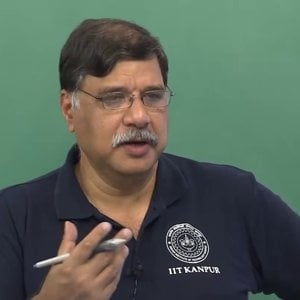
Introductory Quantum Mechanics with Prof. Manoj Harbola (NPTEL):- Lecture 1: Black Body Radiation I
All copyright reserved to Prof. Harbola and NPTEL, Govt. of India. Duplication punishable offence. Course Website: http://www.nptel.ac.in/courses/115104096/- Wrichik Basu
- Media item
- black body radiation quantum basics schrodinger equation
- Comments: 0
- Category: Quantum
-
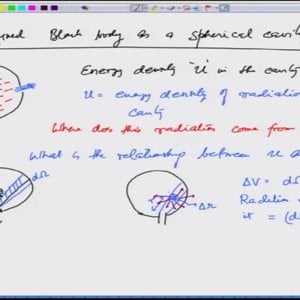
Introductory Quantum Mechanics with Prof. Manoj Harbola (NPTEL):- Lecture 2: Black Body Radiation II
All copyright reserved to Prof. Harbola and NPTEL, Govt. of India. Duplication punishable offence. Course Website: http://www.nptel.ac.in/courses/115104096/- Wrichik Basu
- Media item
- black body radiation quantum basics schrodinger equation
- Comments: 0
- Category: Quantum
-
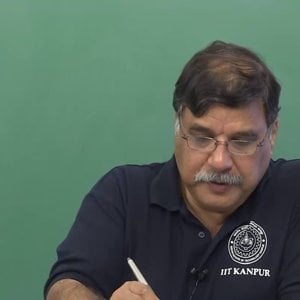
Introductory Quantum Mechanics with Prof. Manoj Harbola (NPTEL):- Lecture 3: Black Body Radiation III
All copyright reserved to Prof. Harbola and NPTEL, Govt. of India. Duplication punishable offence. Course Website: http://www.nptel.ac.in/courses/115104096/- Wrichik Basu
- Media item
- black body radiation quantum basics schrodinger equation
- Comments: 0
- Category: Quantum
-
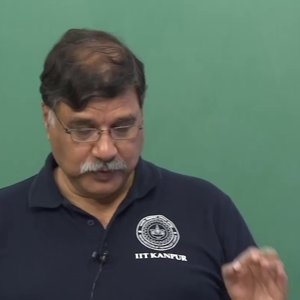
Introductory Quantum Mechanics with Prof. Manoj Harbola (NPTEL):- Lecture 6: Black Body Radiation VI
All copyright reserved to Prof. Harbola and NPTEL, Govt. of India. Duplication punishable offence. Course Website: http://www.nptel.ac.in/courses/115104096/- Wrichik Basu
- Media item
- black body radiation quantum basics schrodinger equation
- Comments: 0
- Category: Quantum
-
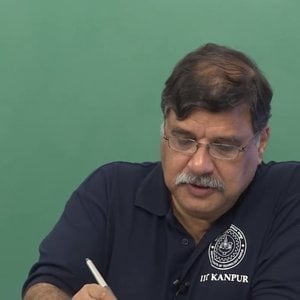
Introductory Quantum Mechanics with Prof. Manoj Harbola (NPTEL):- Lecture 7: Black Body Radiation VII
All copyright reserved to Prof. Harbola and NPTEL, Govt. of India. Duplication punishable offence. Course Website: http://www.nptel.ac.in/courses/115104096/- Wrichik Basu
- Media item
- black body radiation quantum basics schrodinger equation
- Comments: 0
- Category: Quantum
-
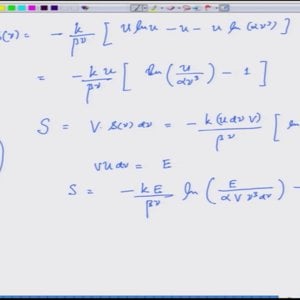
Introductory Quantum Mechanics with Prof. Manoj Harbola (NPTEL):- Lecture 8: Radiation as a collection of particles called photons
All copyright reserved to Prof. Harbola and NPTEL, Govt. of India. Duplication punishable offence. Course Website: http://www.nptel.ac.in/courses/115104096/- Wrichik Basu
- Media item
- black body radiation quantum basics schrodinger equation
- Comments: 0
- Category: Quantum
-

Introductory Quantum Mechanics with Prof. Manoj Harbola (NPTEL):- Lecture 9: Quantum Hypothesis and specific heat of solids
All copyright reserved to Prof. Harbola and NPTEL, Govt. of India. Duplication punishable offence. Course Website: http://www.nptel.ac.in/courses/115104096/- Wrichik Basu
- Media item
- black body radiation quantum basics schrodinger equation
- Comments: 0
- Category: Quantum
-
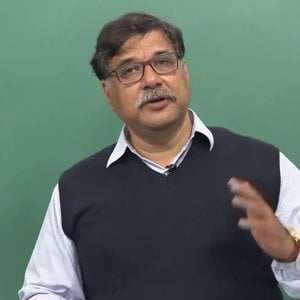
Introductory Quantum Mechanics with Prof. Manoj Harbola (NPTEL):- Lecture 10: Bohr's Model of hydrogen spectrum
All copyright reserved to Prof. Harbola and NPTEL, Govt. of India. Duplication punishable offence. Course Website: http://www.nptel.ac.in/courses/115104096/- Wrichik Basu
- Media item
- black body radiation quantum basics schrodinger equation
- Comments: 0
- Category: Quantum
-
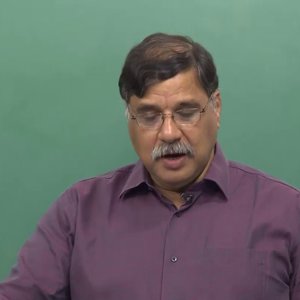
Introductory Quantum Mechanics with Prof. Manoj Harbola (NPTEL):- Lecture 11: Wilson Sommerfeld quantum condition I
All copyright reserved to Prof. Harbola and NPTEL, Govt. of India. Duplication punishable offence. Course Website: http://www.nptel.ac.in/courses/115104096/- Wrichik Basu
- Media item
- black body radiation quantum basics schrodinger equation
- Comments: 0
- Category: Quantum
-
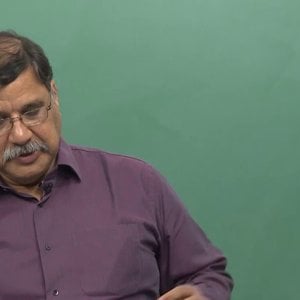
Introductory Quantum Mechanics with Prof. Manoj Harbola (NPTEL):- Lecture 12: Wilson Sommerfeld quantum condition II
All copyright reserved to Prof. Harbola and NPTEL, Govt. of India. Duplication punishable offence. Course Website: http://www.nptel.ac.in/courses/115104096/- Wrichik Basu
- Media item
- black body radiation quantum basics schrodinger equation
- Comments: 0
- Category: Quantum
-
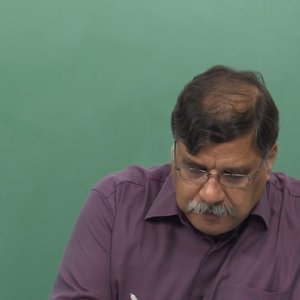
Introductory Quantum Mechanics with Prof. Manoj Harbola (NPTEL):- Lecture 13: Wilson Sommerfeld quantum condition III
All copyright reserved to Prof. Harbola and NPTEL, Govt. of India. Duplication punishable offence. Course Website: http://www.nptel.ac.in/courses/115104096/- Wrichik Basu
- Media item
- black body radiation quantum basics schrodinger equation
- Comments: 0
- Category: Quantum
-
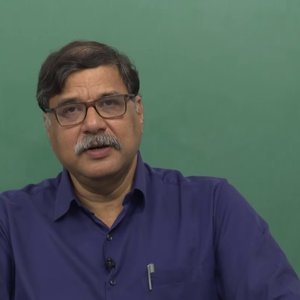
Introductory Quantum Mechanics with Prof. Manoj Harbola (NPTEL):- Lecture 14: Quantum conditions and atomic structure
All copyright reserved to Prof. Harbola and NPTEL, Govt. of India. Duplication punishable offence. Course Website: http://www.nptel.ac.in/courses/115104096/- Wrichik Basu
- Media item
- black body radiation quantum basics schrodinger equation
- Comments: 0
- Category: Quantum
-

Introductory Quantum Mechanics with Prof. Manoj Harbola (NPTEL):- Lecture 15: Eienstien's A and B coefficients
All copyright reserved to Prof. Harbola and NPTEL, Govt. of India. Duplication punishable offence. Course Website: http://www.nptel.ac.in/courses/115104096/- Wrichik Basu
- Media item
- black body radiation quantum basics schrodinger equation
- Comments: 0
- Category: Quantum
-
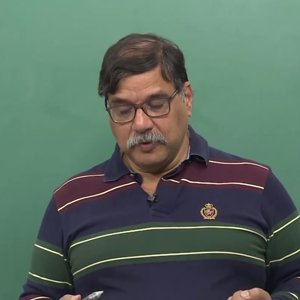
Introductory Quantum Mechanics with Prof. Manoj Harbola (NPTEL):- Lecture 16: Stimulated emission and amplification of light in a LASER
All copyright reserved to Prof. Harbola and NPTEL, Govt. of India. Duplication punishable offence. Course Website: http://www.nptel.ac.in/courses/115104096/- Wrichik Basu
- Media item
- black body radiation quantum basics schrodinger equation
- Comments: 0
- Category: Quantum
-
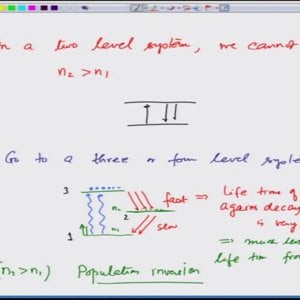
Introductory Quantum Mechanics with Prof. Manoj Harbola (NPTEL):- Lecture 17: Brief description of a LASER
All copyright reserved to Prof. Harbola and NPTEL, Govt. of India. Duplication punishable offence. Course Website: http://www.nptel.ac.in/courses/115104096/- Wrichik Basu
- Media item
- black body radiation quantum basics schrodinger equation
- Comments: 0
- Category: Quantum
-

Introductory Quantum Mechanics with Prof. Manoj Harbola (NPTEL):- Lecture 18: Introduction to the correspondence principle
All copyright reserved to Prof. Harbola and NPTEL, Govt. of India. Duplication punishable offence. Course Website: http://www.nptel.ac.in/courses/115104096/- Wrichik Basu
- Media item
- black body radiation quantum basics schrodinger equation
- Comments: 0
- Category: Quantum
-
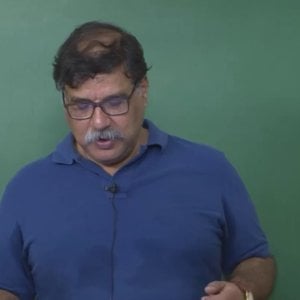
Introductory Quantum Mechanics with Prof. Manoj Harbola (NPTEL):- Lecture 19: General nature of the correspondence principle
All copyright reserved to Prof. Harbola and NPTEL, Govt. of India. Duplication punishable offence. Course Website: http://www.nptel.ac.in/courses/115104096/- Wrichik Basu
- Media item
- black body radiation quantum basics schrodinger equation
- Comments: 0
- Category: Quantum
-

Introductory Quantum Mechanics with Prof. Manoj Harbola (NPTEL):- Lecture 20: Selection rules (for transitions) through the correspondence principle
All copyright reserved to Prof. Harbola and NPTEL, Govt. of India. Duplication punishable offence. Course Website: http://www.nptel.ac.in/courses/115104096/- Wrichik Basu
- Media item
- black body radiation quantum basics schrodinger equation
- Comments: 0
- Category: Quantum
-

Introductory Quantum Mechanics with Prof. Manoj Harbola (NPTEL):- Lecture 21: Applications of the correspondence principle
All copyright reserved to Prof. Harbola and NPTEL, Govt. of India. Duplication punishable offence. Course Website: http://www.nptel.ac.in/courses/115104096/- Wrichik Basu
- Media item
- black body radiation quantum basics schrodinger equation
- Comments: 0
- Category: Quantum
-
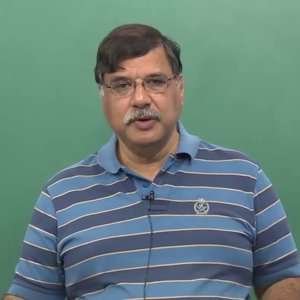
Introductory Quantum Mechanics with Prof. Manoj Harbola (NPTEL):- Lecture 22: Heisenberg's formulations of quantum mechanics I
All copyright reserved to Prof. Harbola and NPTEL, Govt. of India. Duplication punishable offence. Course Website: http://www.nptel.ac.in/courses/115104096/- Wrichik Basu
- Media item
- black body radiation quantum basics schrodinger equation
- Comments: 0
- Category: Quantum
-

Introductory Quantum Mechanics with Prof. Manoj Harbola (NPTEL):- Lecture 23: Heisenberg's formulations of quantum mechanics II
All copyright reserved to Prof. Harbola and NPTEL, Govt. of India. Duplication punishable offence. Course Website: http://www.nptel.ac.in/courses/115104096/- Wrichik Basu
- Media item
- black body radiation quantum basics schrodinger equation
- Comments: 0
- Category: Quantum
-
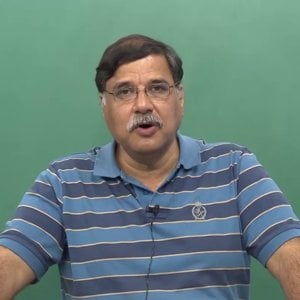
Introductory Quantum Mechanics with Prof. Manoj Harbola (NPTEL):- Lecture 24: Heisenberg's formulations of quantum mechanics III
All copyright reserved to Prof. Harbola and NPTEL, Govt. of India. Duplication punishable offence. Course Website: http://www.nptel.ac.in/courses/115104096/- Wrichik Basu
- Media item
- black body radiation quantum basics schrodinger equation
- Comments: 0
- Category: Quantum
-
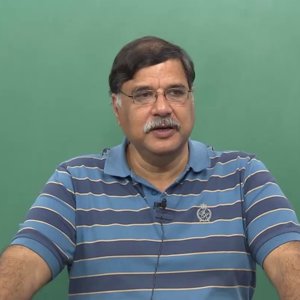
Introductory Quantum Mechanics with Prof. Manoj Harbola (NPTEL):- Lecture 25: Brief introduction to matrix mechanics
All copyright reserved to Prof. Harbola and NPTEL, Govt. of India. Duplication punishable offence. Course Website: http://www.nptel.ac.in/courses/115104096/- Wrichik Basu
- Media item
- black body radiation quantum basics schrodinger equation
- Comments: 0
- Category: Quantum
-
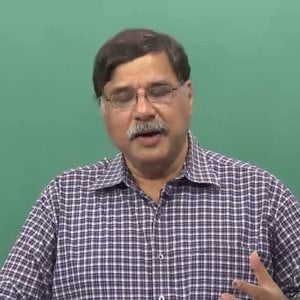
Introductory Quantum Mechanics with Prof. Manoj Harbola (NPTEL):- Lecture 26: Introduction to waves and wave equation
All copyright reserved to Prof. Harbola and NPTEL, Govt. of India. Duplication punishable offence. Course Website: http://www.nptel.ac.in/courses/115104096/- Wrichik Basu
- Media item
- black body radiation quantum basics schrodinger equation
- Comments: 0
- Category: Quantum
-
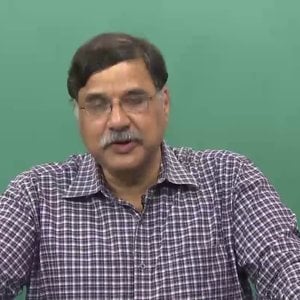
Introductory Quantum Mechanics with Prof. Manoj Harbola (NPTEL):- Lecture 27: Sationary waves eigen values and eigen functions
All copyright reserved to Prof. Harbola and NPTEL, Govt. of India. Duplication punishable offence. Course Website: http://www.nptel.ac.in/courses/115104096/- Wrichik Basu
- Media item
- black body radiation quantum basics schrodinger equation
- Comments: 0
- Category: Quantum
-

Introductory Quantum Mechanics with Prof. Manoj Harbola (NPTEL):- Lecture 28: Matter waves and their experimental detection
All copyright reserved to Prof. Harbola and NPTEL, Govt. of India. Duplication punishable offence. Course Website: http://www.nptel.ac.in/courses/115104096/- Wrichik Basu
- Media item
- black body radiation quantum basics schrodinger equation
- Comments: 0
- Category: Quantum